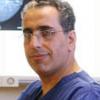The cause for a breast lump chiefly depends on age.
Breast lumps in teens a twenties
Breast Cancer expert, Mr Simon Marsh says that, "In the teens and early twenties the most likely cause is a fibroadenoma. These are harmless but can sometimes grow quite big."
Breast lumps in thirties
"Packet of Frozen Peas Syndrome"
Many women in their thirties find the breast tissue becomes quite nodular. This is sometimes referred to as the “packet of frozen peas” syndrome. So called because in the same way as when frozen peas are removed from a freezer and sometimes clump together, breast tissue can “clump” in a similar way to cause a lump. The important thing is that this, as Simon Marsh explains in his series of expert articles including - Breast Cancer FAQs, this "is a normal, age related, change."
Breast lumps in forties
Harmless cysts become the most common cause of a lump. These are fluid filled sacs that can be drained off with a small needle if they are troublesome. Women who get cysts will often get them for several years.
Breast lumps over the age of fifty
Over the age of fifty breast cancer begins to get more common, although Mr Marsh emphasises that it can of course, occur at any age.
There are other, less common lumps that can occur such as:
- abscesses,
- phyllodes tumours,
- cysts in the skin,
- lipomas (fatty lumps) as well as
- lumps that have spread from other diseases such as lymphoma or lung cancer.
In all cases it is naturally important to get these checked by a medical breast expert.








